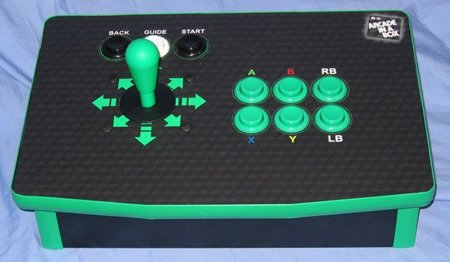Drambit
Active member
I custom built an arcade stick that I want to work as a universal controller, rather than emulate a keyboard. I have very little experience programming, but I have a very solid fundamental foundation of knowledge from a long history of working with electronics and computers, as well as dabbling a tiny bit in programming but being really bad at it. I could probably pick it up quickly but not without instructions, so I'm looking for some help here.
Here are the specifics of what I need to accomplish:
Any and all help is appreciated, I could probably eventually figure it out on my own but find it extremely difficult and have no intuition when it comes to computer programming, so this is a very challenging task for me. I would prefer if things are explained a bit rather than just someone sending me a carbon copy of their code, but I'll take anything I can get.
Here are the specifics of what I need to accomplish:
- The stick is composed of 10 buttons, 8 face buttons, 1 start button, 1 select button, and a digital 8 way joystick. It looks just like this
 .
. - A lot of people seem to like emulating keyboards just so that it barely works on PC, but I want it to operate just like universal pcb, so that it works on PC, PS3, Mac, and the two next-gen consoles.
- I'm using a Teensy 2.0 without any pins, but I have a bunch of wires soldered onto the board so I can breadboard everything.
- Input lag is an absolute no-no, so if it reduces input lag even by 1 millisecond using C I will try to use C, although it is obviously much more difficult.
Any and all help is appreciated, I could probably eventually figure it out on my own but find it extremely difficult and have no intuition when it comes to computer programming, so this is a very challenging task for me. I would prefer if things are explained a bit rather than just someone sending me a carbon copy of their code, but I'll take anything I can get.

